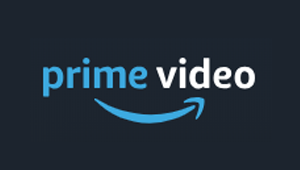
As promised when it announced its plans in September, Amazon is joining its competitors in upping the cost of its Prime streaming service, forcing subscribers to cough up an extra $2.99 to avoid ads. Up until now, the service has been a free add-on to Prime members who pay $14.99 per month or $139 per year.
“To continue investing in compelling content and keep increasing that investment over a long period of time, starting in early 2024, Prime Video shows and movies will include limited advertisements,” the company announced last fall. “We aim to have meaningfully fewer ads than linear TV and other streaming TV providers.”
The U.S. is being hit first but the ad-supported service will also be introduced in the U.K., Germany and Canada shortly, followed by France, Italy, Spain, Mexico, and Australia later in the year.
The ad-supported service will now be considered the default unless Prime members decide to pay the higher fee. Amazon said it has no plans raise to the current price of Prime membership in 2024.
Amazon is following in the footsteps of its main competitor Netflix, which rolled out its ad supported service for its subscribers in November 2022. The “Netflix Basic With Ads” plan costs $6.99 per month and the ad-free Basic plan goes for $11.99 per month—that will be increased to $15.49 per month. Last week, the streaming service announced it would retire its lowest tier subscription, making the cheapest subscription $15.49. The premium no ad service is currently priced at $22.99 per month.
Disney, which offers a variety of ad-supported bundles with (and without) Hulu, charges $7.99 for its ad supported tier or $10.99 sans ads per month.
Unlike its competitors, Amazon has much more experience and insight into digital advertising, which could give it a leg up on its competition. “Amazon has a relatively lower cost to have ads on the platform for ad buyers, as opposed to Netflix or Disney,” said Yahoo Finance Senior Reporter Alexandra Canal. “And that could potentially bring down the cost of TV ads across the board. It's also going to encourage a lot more competition.”
The professional video industry's #1 source for news, trends and product and tech information. Sign up below.
As the major streaming services set their next sights on TV's holy grail—live sports—prices hikes like this could become the norm. Nevertheless, the recent spikes are raising concerns about how much more viewers are willing to pay for subscriptions in a still nascent industry trying to find a way to profitability.
Referring to Amazon Prime, “they’re offering no additional value and simply forcing ads on consumers,” says Mike Proulx, a research director at Forrester tells the Washington Post. “Consumers in effect are losing out on this move, and it’s all Amazon’s gain.”
Tom has covered the broadcast technology market for the past 25 years, including three years handling member communications for the National Association of Broadcasters followed by a year as editor of Video Technology News and DTV Business executive newsletters for Phillips Publishing. In 1999 he launched digitalbroadcasting.com for internet B2B portal Verticalnet. He is also a charter member of the CTA's Academy of Digital TV Pioneers. Since 2001, he has been editor-in-chief of TV Tech (www.tvtech.com), the leading source of news and information on broadcast and related media technology and is a frequent contributor and moderator to the brand’s Tech Leadership events.

